The Rise of the Middle Kingdom – Reflections on the Indigenous Mission Movement

The Rise of the Middle Kingdom
– Reflections on the Indigenous Mission Movement
By Ai Hua
One of the remarkable areas of global progress of the 21stcentury is the rise of the Middle Kingdom. The last decade, especially, has witnessed aggressive steps by China to open up the country to greater engagement and exchange with the world. With the GDP growth at 10% per annum, it is without any doubt that China has become the emerging global economic and political superpower of our time.
In this global context, the Chinese church has also gone through explosive growth. The Christian population is estimated to have reached anywhere between 50 million to 130 million. As the society has been undergoing huge urbanisation, the shape of the church has also changed from a rural-based house church (which is largely comprised of the elderly, women, the non-literate and the rural) to an urban-based church (which includes professionals, students, academics and overseas returnees). The boundary between the two however is fluid as the rural-based house church continues to play a key role in urban mission. Evangelism and mission undergirded by prayers have been the core value of the Chinese church.
Following the well-known ‘Back to Jerusalem’ (BTJ) movement, which calls for Chinese Christians to take the gospel westward all the way to Jerusalem, what is happening now in the Chinese church with its mission mandate? What can they learn from their past mistakes? What can they offer to and learn from the global church? What are the opportunities and risks that lay ahead of them? This paper gives a rough sketch of the current Indigenous Mission Movement (IMM) or the China Mission Movement (CMM) and offers some missiological reflections from the past, the present and the future.
Looking Backward – Pitfalls of the BTJ Movement
The BTJ movement stemmed from a vision back in the 1920s by the Jesus Family church in Shandong. Later an evangelistic campaign was launched by a small group of Chinese Christians in the 1940s. The vision was to take the gospel to the remote regions of China and beyond, through a northwest and southwest route, via Central Asia and the Middle East all the way to Jerusalem. The so-called ‘BTJ Evangelistic Band’ was formed and a small group of pioneers set out on their journey to Xinjiang. They planned to learn the Turkic and Arabic languages and eventually reach into the Islamic-dominated regions beyond China. Unfortunately, as Paul Hattaway and many other interviewers record, the group did not reach anywhere beyond Kashgar.[1]
This vision was re-ignited within the House Church movement in the 1990s and quickly spread as a mission movement via hymns, articles, books, conferences and internet discussions at the turn of the century. It claimed that 100,000 Chinese missionaries were to be sent out from the Middle Kingdom to the Muslim regions, eventually reaching Jerusalem—the birthplace of Christianity. In doing so, the Chinese church would carry the last baton of the gospel and complete the Great Commission before the second coming of Jesus Christ.
While this movement sparked much excitement and anticipation from the Post-Christendom West, the Chinese church as the carrier of the movement experienced first-hand excruciating pain, as well as burns and discouragement. No doubt, the movement has sparked some controversies and calls into question a number of things.
Firstly, lack of preparation:
The aspirational number of 100,000 missionaries from China is in contrast to the reality of the sending capacity of the Chinese church. While it is plausible to take the Great Commission seriously and go to the nations with passion and zeal, the Chinese church at large is still in the stage of preparation—needing training, mobilisation, implementation of structures, resources and support networks. Amongst the Chinese church leaders, there has been a self-critique that the church has plenty of ‘slogans but no action’, plenty of ‘emotion but no motion’. The emotional outburst, one of the characteristics of the Chinese church,[2] needs to be balanced out with some rational planning, sending and support structures, and practical strategies.
Secondly, lack of spiritual foundation:
Amongst those who have gone to the nations beyond the border of China, a high attrition rate of up to some 90% has been recorded. Some of the returned missionaries were interviewed and reported their sad missionary experience as the so-called ‘cannon fodder’. They suffered from severe burnout, depression, and shame. Some went out as single missionaries and returned with regret that they missed out on the opportunity to get married. Some blamed themselves for failing in the mission field and therefore had brought shame to their church. This is detrimental to their spirituality in an honour/shame culture. Some even lost their faith. There were occasional suicide cases. Along with these sad stories, there are those who stayed or returned to the field and continued ploughing the field with endurance, often without any solid support from the sending church or agency.
The cause of this high attrition rate is complicated. Apart from the cross-cultural challenges, there are however two key reasons impacting on Chinese missionaries: the lack of self-care and external care. The performance driven culture in the society ripples into the church and influences believers’ spirituality. It seems that the higher number of converts one can win, the more one would be favoured before God. One would be cast out or lose support from the church if the numbers are not satisfactory. For example, four units of a house church network were sent out to a remote minority region. After four years, no church was planted as they were still learning the culture and language, so they were sent home due to the lack of productivity. The serious spiritual impoverishment rooted in performance has been one of the key causes of the ‘failure’ of Chinese missionary endeavour.
Thirdly, lack of sound missiology:
Brother Yun in his well-known ‘The Heavenly Man’ claims that the missionary training that Chinese workers receive is how to survive suffering and persecution. They were ready to be tortured and put in prison. While this is commendable and faith-inspiring to the largely comfortable global north, it remains questionable if this is sufficient for one to survive in a hostile foreign environment without understanding of the local culture, language, worldview and a grasp of basic life and interpersonal skills.
More than this naïve idea of cross-cultural work, it is the theological foundation and missiological assumption unfounded in the biblical mandate that drew much criticism from both inside and outside China. The eschatological movement claims that in preparing for the second coming of Christ, the Chinese church is to carry the last baton and take the gospel back to Jerusalem to complete world evangelisation.
This view is rejected by many including Jin, a pastor from Mainland China. He examines the biblical foundation of the BTJ vision, differentiating it from ‘the Replacement Theology’ from Western Europe and Zionism. He strikes a balanced view of the universality of salvation to all and the particularity of Christian ties with Israel.[3] Clearly, this reflection of biblical theology comes with the growth and maturity of the ever-growing urban church. The idea of taking the gospel westward only does not reconcile with the biblical mandate which declares in the Lausanne movement that the gospel is ‘from everywhere to everywhere’.
Apart from the above pitfalls of the movement, there are other issues brought under scrutiny. For example, whether Brother Yun, the Heavenly Man, is a legitimate spokesman of the movement; whether there is sufficient accountability in relation to the finance of the movement; whether there is transparency and authenticity of what has been promoted. Despite these, the Chinese church continues to grow with its full living strength by God’s grace. The lack in these areas does not mean that their ‘jar’ is completely empty. In contrast, they have been graced with gifts and blessings to reach the nations. The Chinese church can learn from the treasure within to carry the gospel baton that has been entrusted to them.
Looking Inward – The Treasure Within
Presently, the CMM is mainly carried out within the landscape of the house church. The official church, known as the Three-Self church, largely does not promote mission or evangelism. The traditional rural church does not have sufficient resources or capacities to send a large number of cross-cultural workers overseas. The ever-growing urban church, who prides itself with the professional and language skills, material prosperity and connection with the overseas church, is keen to explore mission and send workers to Central Asia and the Arab world. They however lack the spiritual heritage of the rural church. ‘Mission China 2030’, a mission movement connected with Lausanne, was initiated by the urban leaders in 2013. The first conference was launched in Hong Kong in 2015, subsequently in Jeju City, Korea in 2016, and in Chiang Mai, Thailand in 2017. The movement claims, in order to pay off the gospel debt in that foreign missionaries have been sent to China over the last 200 years, the Chinese church should aim to see 20,000 missionaries sent out from China by 2030. Although there are a few hundred people making their missionary commitment in each of these conferences, the number of those who actually make their way is still very limited. In a colloquial phrase, it has ‘loud thunder’ and ‘a few raindrops’.
This backdrop of the CMM calls for the church to look deeply into its own heritage and learn how to draw strength from within.
Firstly, the heritage of the house church movement
There are wells of living experience and biblical foundation within the house church movement that both the global church and the present generation within the Chinese church can draw strength and learn from. The house church is a grass-roots movement that is characterised by the following five major factors:[4]
- the centrality of the Bible
- commitment to prayer
- empowerment for evangelism
- learning from suffering
- expectation of miracles
Others however intelligently use the 3Ps: patriarchal leadership; persecution and prayer to summarise its DNA. It is not completely accurate to claim that leadership is patriarchal because many of the church ministries were in fact started and sustained by female leaders. These significant factors of the Chinese church’s DNA characterise the early church of the New Testament, and call for the global church to go back to the root of the Christian tradition. These are summarised well from the numerous living testimonies from the Chinese house church movement rooted in the rural setting. These are also the so-called ‘secrets’ of the Chinese church which experienced astonishing growth from 1990 to 2010.
During this period, many overseas denominations and their associated theologies flooded into China in order to help the church to grow. They too, knowing or unknowingly, brought in their domesticated gospel—their own theological and denominational convictions, structures and ministerial models. Like a teenage boy who is hungry for any food put before him, but also desperate to seek his independence, the Chinese church is eager to learn things imported especially from USA and Korea such as mega-church models, reformed theologies and church structures. Inevitably, ‘the teenage boy’ gets confused or even divided at times by different denominations, doctrines and controversial arguments.
Indeed, the indigenous theologies from the living experience of the house church movement are yet to be reflected and articulated by thinkers and practitioners alike in the years to come. There is much need to develop theological and missiological implications out of the DNA of the house church movement, in order to see the growth of the indigenous mission movement out of Chinese soil.
Secondly, the five thousand years of civilisation
The rich cultural tradition in China with its written record tracing back as early as 1500BC resonates with other ancient civilisations including the Israelites. Its emphasis on relational-based social and family ethics, honour/shame culture, hospitality and community bears much resemblance with the biblical Jewish tradition. As one of the oldest ancient civilisations, Chinese culture carries profound wisdom and virtue in its philosophy, religion, etiquette and literature. It is a huge mining field where one can dig deep into the culture and form a creative dialogue with the gospel.
These areas of intercultural dialogue and comparative theology have been studied by some Chinese university scholars, the so-called ‘Cultural Christians’ such as Liu Xiaofeng, and He Guanghu.[5] They are the forerunners in the Chinese intellectual engagement with culture and Christianity. The house church has much to learn from these intellectuals. Historically, the Chinese church has tended to deny the cultural and historical relevancy in communicating the gospel. Now with good biblical and theological foundation, it is time for the church to move away from fundamental suspicion and intolerance, to evangelical love and openness in this sort of work. This is an urgent task before the church as it engages in the contextualisation of the gospel in Chinese soil, as well as global mission, which will inevitably encounter the intersection between culture and faith.
The sensitive engagement with the local and foreign culture needs to be learned, cultivated, experienced and reflected. It will help the church not only to grow in its own soil, but also to avoid some of the existing perils, such as sectarianism, ethnocentrism and fundamentalism.
Thirdly, the growth of economy and population
Since it was recognised as the world’s second largest economy just after the United States in 2010, China has astonished the world with the speed of spectacular growth: its massive overseas investment, road and building constructions, tourism, migration and educational exports. China’s volume of exports and imports occupied 10% of the total of the world in 2011. Just to name a few over the last couple of years: the rise of Alibaba as the world’s largest retail trading platform, and the joining of China’s yuan to the International Monetary Fund in 2016, the arrival of the superior network of Huawei 5G in 2017—all are discernible milestones of the global economic power. The common impression that goods ‘made in China’ are of massive production but of poor quality, is changing before our eyes.
With its current population of 1.4 billion people within the Mainland in 2018, China has been recognised as a key player in the economy and politics of the world’s stage. How can the church take the opportunity to utilise its resources and population in global mission? If there is one missionary out of every 1,000 believers, then China would send out 50,000 to 130,000 missionaries. If China is to be the largest Christian nation reaching 160 million by 2025 and to 257 millions by 2032, according to Yang Fenggang in Purdue University,[6]then it shall become the largest missionary force in the world.
Looking Outward – Learning from the Global Church
Firstly, learning from their mistakes
The colonial history of western mission has not provided all positive perceptions in Chinese people’s minds. From the time of the first Opium war in 1840, Christianity has been mixed with foreign imperialists’ opium and gunpowder. Up till today, Christianity is perceived as a foreign religion by many Chinese, as in many majority world countries. Western mission was at its worst when it was connected with power and money: slavery, crusades, violence, genocide, and the list goes on.
This is a vital lesson for the Chinese church to learn as it rises to become a world power. What is the message the Chinese church carries and embodies? From the birth of the early church, Christendom has shown that Christianity always flourishes at the margins amongst the minorities, often in the midst of persecution and restrictions. The gospel of Jesus manifests itself through vulnerability and powerlessness of his people, like the stars shining even brighter in the dark. Christians pray harder in time of difficulties because they walk in dependence on God whose strength is made perfect in their weakness. They learn to live out of dependence and surrender, drawing strength from the Godhead. Can the Chinese church remain in this lowly and uncomfortable place, allowing their prayers and devotions to flow from the place of powerlessness?
One of the hurdles for Chinese missionaries is learning to be cross-cultural. Being mono-cultural like Koreans, the Chinese mostly grow up and live with the same people group, the Han majority, without exposure to other people groups. This can apply to many overseas Chinese too, who prefer to have their mono-cultural congregations and social interactions. This leaves the church with the danger of ethnocentrism, without much room for openness and sensitivity to engage with people who are from very different cultural backgrounds.
This hurdle can be overcome if the Chinese church deliberately learns to go across the road, not just to their own people but also to other cultures and groups. It needs to come with the humble learning spirit and attitude of servanthood. Unlike the imperial power of the western mission in the past and even till today, the Chinese church can seek to bless the nations as a servant—not to be served, but to serve (cf. Matt. 20:28), not to be prominent but be hidden in Christ (Col. 3:3).
Secondly, learning their methods and tools
Over the last few decades, the Chinese church has grown tremendously in its theological and biblical understanding, largely due to the training provided by overseas trainers and many training materials, CDs and DVDs. While this training provides the emerging vibrant church with sound doctrines and biblical knowledge, most of the training has imported theology from the global north. Sadly, there has been limited development of Chinese theology rooted in Chinese soil that communicates a ‘Chinese Jesus’ rather than a ‘western Jesus’. It is also concerning that little has been taught from the theology of the global south— Africa and Latin America. The result is a lack of contextualisation in the former and a lack of global vision in the latter.
However, the global north does have something to give to the Chinese church, with its 2000 years of theological and missiological development. They can pass on biblical hermeneutical tools, theological methods, and pastoral models, as references for the church to consider deeply and widely in its own context. The goal is not importation, but widening their horizons and encouraging them to develop their own transformative theology in their context.
In terms of cross-cultural mission, the global north can impart to the Chinese church some intercultural learning experience such as patient learning of culture and language, sensitive engagement in dialogue and humble listening to people of other faiths. Other areas include some missiological principles such as wholistic and incarnational mission.
Thirdly, learning to work together
In order to collaborate with the global church, the Chinese church has formed partnerships with international partners through different platforms to facilitate cross-cultural work to the minorities within China and unreached people groups outside the nation. The partnerships can be in the form of helping the Chinese church to set up their own sending mechanisms, sending out local workers in partnership, or adopting them into international mission. Yet it is an uncharted field as the Chinese church takes the leadership role and international partners step aside. The ‘little brother’ has grown up and now is experiencing some kind of ‘initiation’ to become an adult. He is yet to learn to overcome his own inferiority and dependency, master the skills in leadership and grow in wisdom and discernment. He also has something to give and teach the global church. No models have been provided before and he needs to be held by hands at times during the transitional hours.
Going beyond agreement or MOU between institutions, the Chinese church needs to learn to foster a culture of honour, respect and trust based on face-to-face relationships with international partners. By listening attentively and patiently to each other accompanied with prayers, the Chinese church can be a key voice in global mission and reach a new level of intimacy with God and passion for the unreached. By discerning together, international partners can work with the Chinese church in its strength and weaknesses, its movement in consolation or desolation, its unique contribution to global mission (such as the theology of suffering, the house church model and evangelistic zeal). They can also share their years of missionary experience. By being aware of the indigenous mission movement derived from the very nature of the missional Trinitarian God,[7]they can move beyond programs and models, and work from within the transformational power.
After looking back, inward and around, the Chinese church can look to the future with hope and anticipation.
Looking Forward – Opportunities or Risks
The Chinese word ‘Crisis’ (Weiji) is made up of two words: risk and opportunity. It reflects the ancient wisdom of yin-yang correlation, in which eventually harmony may be found. What lies ahead of the church is both exciting and challenging.
Opportunities
Following the ancient Silk Road routes, the One Belt One Road Initiative (OBOR) project is a massive worldwide project proposed and implemented by the Chinese government that connects China with the Eurasian countries with roads, railways, ports and maritime routes. The land-based projects are the Economic Belt that connects Beijing to Central Asia all the way to Europe; the ocean-going projects are the Maritime Road that connect China’s southern provinces to southeast Asia and the east coast of Africa (see the following diagram). Already 1 trillion US dollars have been invested largely in the infrastructure of Africa and Central Asia. It is estimated to be the largest mega-project of infrastructural development in human history, covering over 68 countries that have 65% of the world’s population.
Similar to the ancient Roman Empire, OBOR can potentially open up transportation routes and platforms for the spread of the gospel. This government-initiated strategy potentially gives the church the opportunities to reach many unreached nations (2/3 of unreached nations) dominated by Buddhism (500 million), Hinduism (800 million) and Islam (900 million) just on the Maritime Road alone.
Many Chinese leaders are excited to hitchhike on the ambitious government plan with the emerging mission movement. The assumption is that OBOR can provide both transportation and business opportunities for Christians to work in these regions amongst people groups who have little access to the gospel. They think that OBOR symbolises the ‘east wind’ as the one crucial item in the mission movement. In a Chinese idiom, ‘everything is ready, all we need is an east wind’. The wind is here ready to take the church to the unreached nations, and the CMM should forge ahead under this favourable wind. In fact, the commercial exchange has already enabled Business as Mission (BAS), initially by Chinese businessmen.
In addition, China has historically maintained good political and economic relationships with the Arab world without the baggage of the western world. Labour exports, investment and construction have opened doors for many Chinese to enter these predominantly Muslim countries.
While OBOR could be a God-given opportunity for the Chinese church to fulfil its mandate of the Great Commission (Matt 28:16-20), the correlation between OBOR and the CMM needs careful missiological thinking and practical planning. The naïve and optimistic view needs careful examination.
Risks
The main risk accompanied with the opportunity is the danger of connection between empire and mission. The colonial history of the western mission shows the intermingling of the two has some detrimental effect on both the spread and the inculturation of the gospel in local soil. While missionaries made great contributions to local people through medical care, education and the economy, their inseparable ties with colonial empires have left long-term scars on the colonised nations. For example, on the Iberian Peninsula—home of Spain and Portugal today, the war under ‘the Cross and Sword’ that melted military power and religious fever together lasted for eight centuries (8th–15thcentury) long. On the land of Japan, Catholicism was under persecution for three hundred years (16th–19thcentury) and almost disappeared, following the Franciscans’ involvement in the local political power. In the far lands of Africa, the ‘3Cs’ strategy—Christianity, Commerce and Civilisation, promoted by David Livingstone (1813–1873), has proven to have a short-term positive impact on the local economy and environment, but long-term negative effects on the understanding of Christian salvation and ecclesiology amongst the local people.
These historical lessons cannot be underestimated if the Chinese church is to intermingle with OBOR, which is primarily driven by political and economic interest. How would the local people perceive Chinese missionaries if they are already resentful of the giant Casinos established by Chinese business people in Cambodia? How would Chinese missionaries be welcomed if the hydroelectric power station project was forced to stop due to the objection of local people in Burma? The first perception always lasts longer than one intends. The CMM’s connection with OBOR needs to be under careful consideration.
Last year, two young Chinese missionaries, amongst the thousands sent under the OBOR trade project, were kidnapped and murdered by ISIS in Pakistan. They were learning the Urdu language in a school in Quetta when they were killed. Their deaths prompted scrutiny from both China and Pakistan, which resulted in a tightening of the visas to Chinese nationals from the Pakistan side, and driving out of Korean personnel connected with the school from the China side. This is the ‘first’ incident, but not the last if the Chinese church does not think through the potential danger of persecution, restriction of visas and diplomatic tension.
The complexity of modern day transnational engagements invites the Chinese church to walk with wisdom, insight and boldness in its missionary ambition.
Conclusion and Recommendations
This article has offered a 360-degree of reflection on the Chinese indigenous mission movement. It has suggested that the Chinese church can learn from the past pitfalls of the BTJ movement, draw strength from its inner DNA and heritage, work alongside the international church, and take up the future opportunities and challenges with wisdom and courage. To do this, missiological education that encompasses all the facets is a key factor to empower the movement. The Chinese church knows they need training, but where to start? Here are a few proposals:
- Screening processes that select quality candidates in education, character and maturity.
- Spiritual formation of cross-cultural workers that starts right from the beginning. Theological and biblical knowledge is important, but has no power to overcome obstacles without prayer and intimacy with God especially in times of crisis.
- Missiological reflection accompanied with field practice to enable the deepening understanding of cross-cultural mission.
- Trainers and mentors who can walk alongside missionaries to support and encourage them on the journey.
- Cross-cultural training materials and curricula that are tailor-made for Chinese missionaries to help them to engage with other cultures from a Chinese lens, not western eyes. So far the majority of the 500 titles are translated from English. The training needs to go beyond the basic level training such as Perspectives to higher degree level training.
- Training in the establishment of sending structures, processes, member care and so on to enable the mission movement to be truly indigenous.
- Sharing experience and resources in global mission communities, hubs and platforms to open doors for collaboration and partnership.
If Napoléon Bonaparte is right about China as the sleeping giant, then he has certainly awakened and started to move the world. As the Chinese church joins the global church and carries the gospel with zeal and passion to the nations, he is also marching into his maturity through self-reflection and growing wisdom. He will surely fall at times, especially in the current climate of newly introduced religious policies (effective from the 1st February 2018). Our prayer is that he will not fall at the same places as the western or the Korean missions. He will find his steps towards the uncharted territories and make his landmarks in the global mission. It is not by economic or political power as a rising empire, but by the power of love in humility and suffering, following the footsteps of their Saviour and Lord. Only then, the sleeping giant can be truly awakened and roar for the glory of God.
Bibliography
Bosch, David Jacobus. Transforming Mission: Paradigm Shifts in Theology of Mission, Maryknoll, N.Y.: Orbis Books, 1991.
Hattaway, Paul, Brother Yun, Peter Yongze Xu, and Enoch Wang. Back to Jerusalem—Called to Complete the Great Commission, Carlisle: Piquant, 2003.
Jin, Ezra. Back to Jerusalem with All Nations, Oxford: Regnum Books International, 2016.
Phillips, Tom, and Liushi. “China on Course to Become ‘World’s Most Christian Nation’ within 15 Years” The Telegragh, https://www.telegraph.co.uk/news/worldnews/asia/china/10776023/China-on-course-to-become-worlds-most-Christian-nation-within-15-years.html.
Tang, Edmond. “The Changing Landscape of Chinese Christianity”. China Study Journal23, no. Spring/Summer (2008).
__________________________________________________
© Copyright 2018 Ai Hua
This article was originally published in Australian Journal of Mission Studies 12, no. 1 (June 2018).
Download the PDF version of this article HERE (in English).
[1]Paul Hattaway et al., Back to Jerusalem—Called to Complete the Great Commission, (Carlisle: Piquant, 2003), 28-45.
[2]Edmond Tang, “The Changing Landscape of Chinese Christianity”, China Study Journal 23, no. Spring/Summer (2008), 37: He identifies the outbursts of emotion as one of the characteristics of Asian Christian groups.
[3]Ezra Jin, Back to Jerusalem with All Nations, (Oxford: Regnum Books International, 2016).
[4]The five major factors were shared by an urban leader and later used by Francis Chan in his plenary speech in the first ‘Mission China 2030’ in Hong Kong in 2015.
[5]‘Cultural Christians’ refers to those Chinese intellectuals who share empathy with practising Christians, but without any church affiliations.
[6]Tom Phillips and Liushi, “China on Course to Become ‘World’s Most Christian Nation’ within 15 Years”, The Telegraph, https://www.telegraph.co.uk/news/worldnews/asia/china/10776023/China-on-course-to-become-worlds-most-Christian-nation-within-15-years.html, 2 Mar: This is based upon the premise that the present rate of growth of the Church in China would be maintained.
[7]David Jacobus Bosch, Transforming Mission: Paradigm Shifts in Theology of Mission, (Maryknoll, N.Y.: Orbis Books, 1991), 390, cf. 289-393: He explains, ‘Mission was understood as being derived from the very nature of God … the church is viewed as an instrument for that mission … There is a church because there is a mission, not vice versa.’
__________________________________________________
也参见这些文章 (See these articles too):
Books
Don’t forget to buy Graham Hill’s books:
- Healing Our Broken Humanity
- Global Church
- Salt, Light, and a City (second edition)
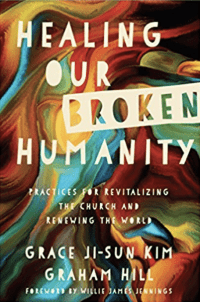
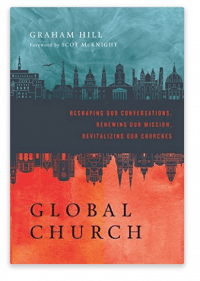

CONNECT WITH US
FOLLOW US ON SOCIAL NETWORKS
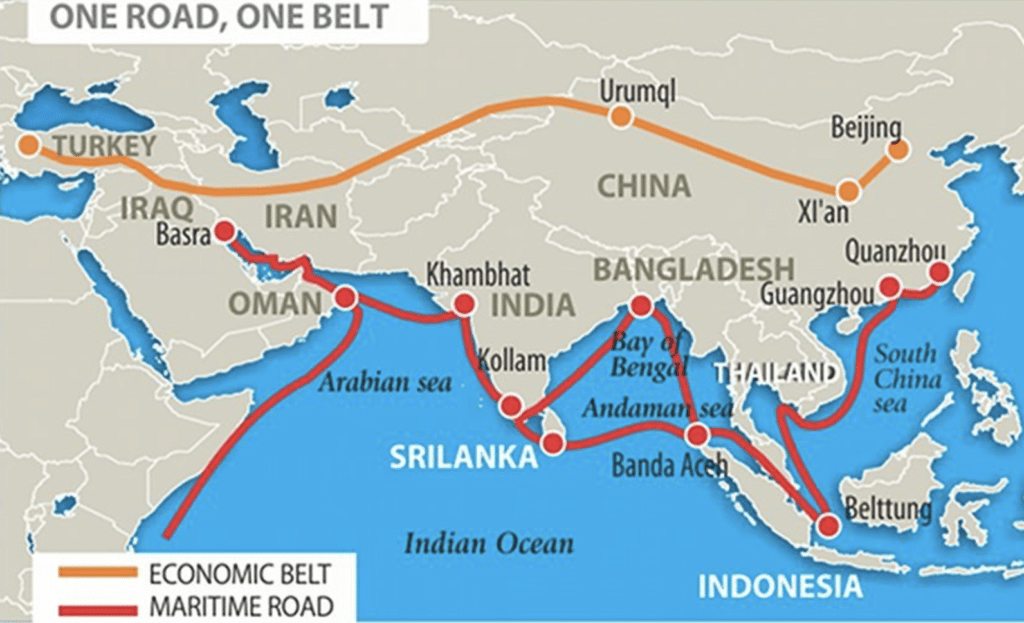



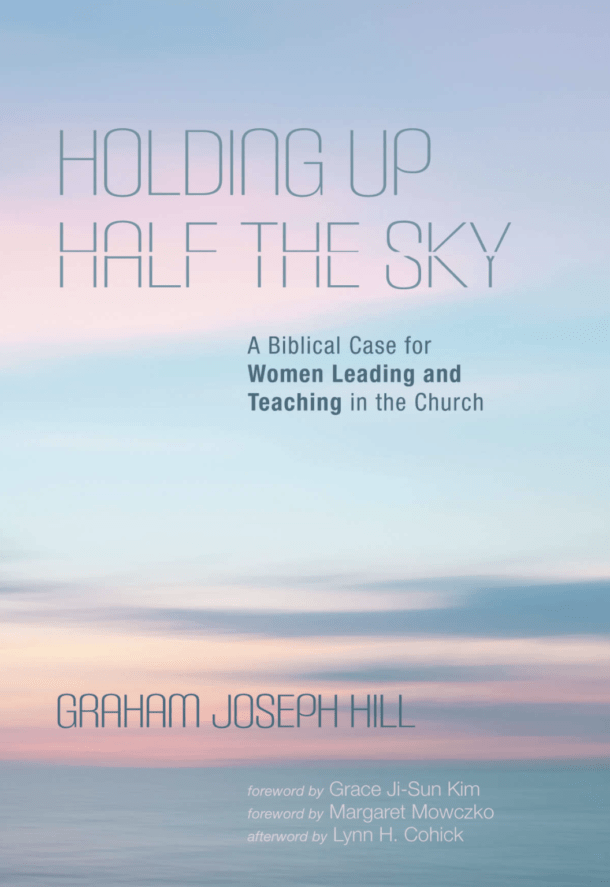
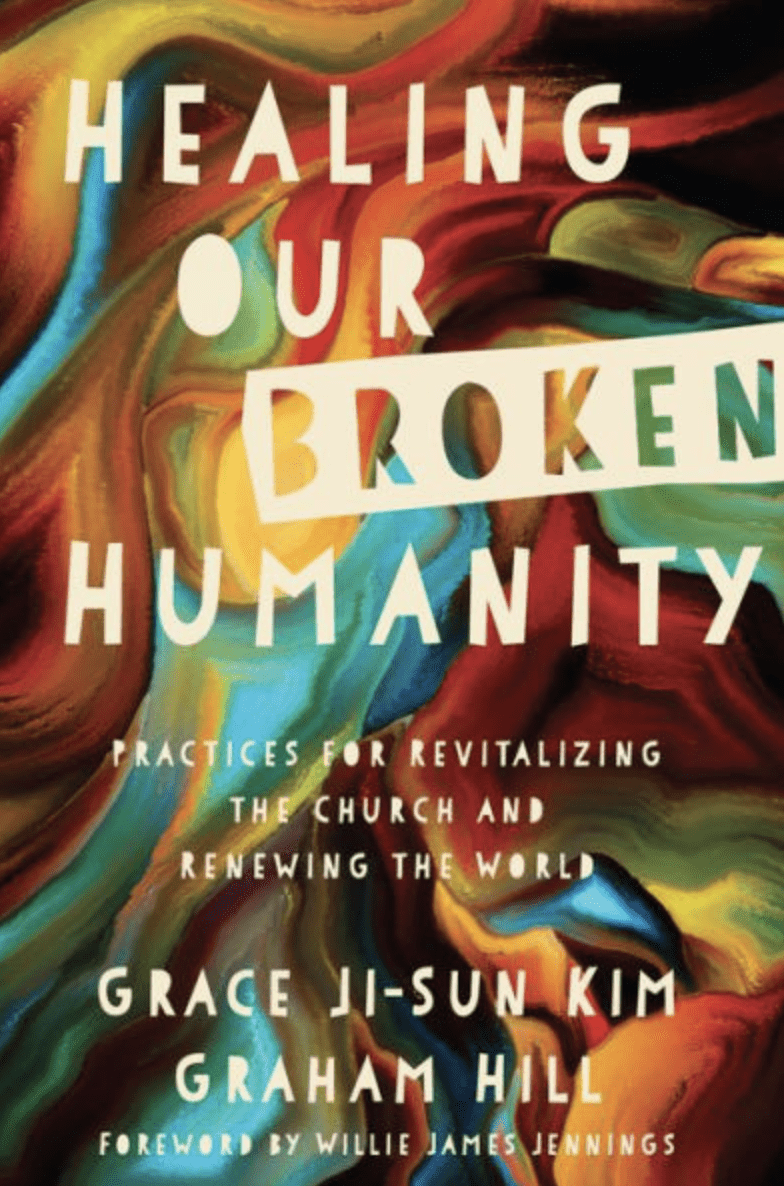
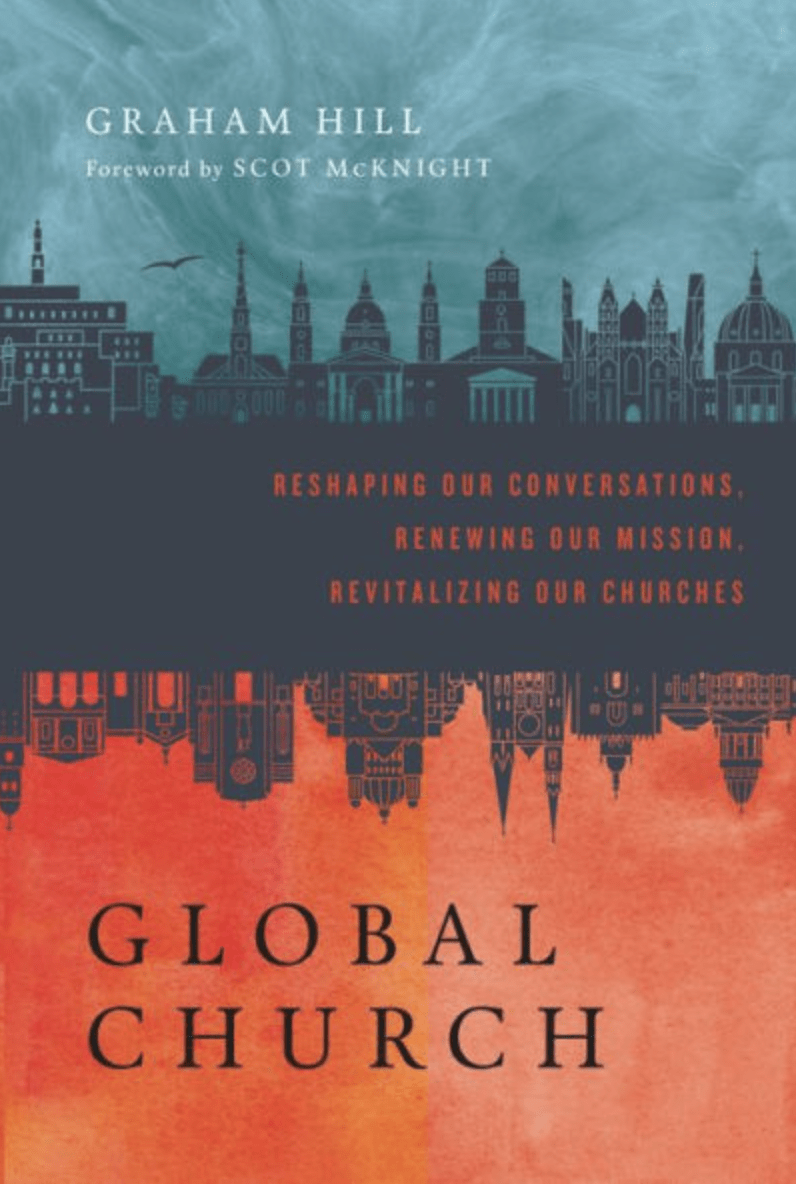
0 Comments